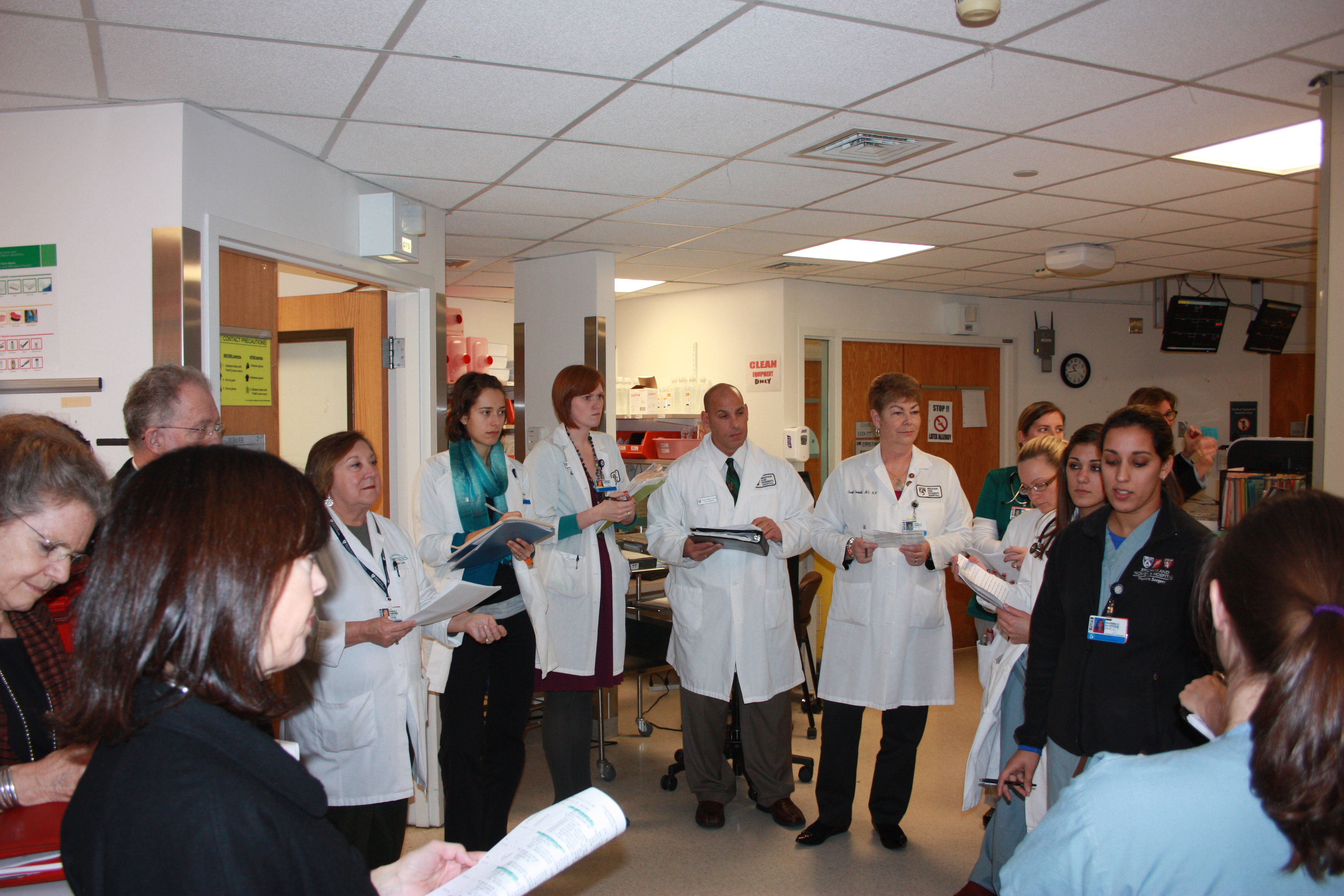Multidisciplinary
Rounds Foster Communication, Contact

BWH's multidisciplinary Thoracic Surgery team gathers for daily rounds on Tower 11. |
Every
day around 8:30 a.m., a group page is sent out, and 11 to 15 members of BWH's
multidisciplinary Thoracic Surgery team make their way through Tower 11A, 11B,
11D and 12B. Positioned in a circle so no one's back is facing anyone, team
members-including nurses, physician assistants,
residents and staff from Nutrition, Physical Therapy, Chaplaincy, Social
Service and Partners Home Care-concisely but comprehensively discuss the care and
discharge plans of 25 to 30-and at times, as many as 60-patients.
Since adopting this approach in 2004, the team has seen
increased communication among team members and great improvements to patient
length of stay. Despite an increase in service by 30 percent in the past six
years, the average length of stay for a thoracic surgery patient has decreased
from 7.8 days to 6.4 days in the same amount of time.
"It is much easier and more effective to conduct rounds
this way because everybody knows their patients and what they need," said Ann
Higgins, RN, Thoracic Surgery care coordinator. "It gets everyone talking to
each other and on the same page."

From left: Physician assistant Mahima Buttrick, Thoracic Intermediate Care Unit Director Namrata Patil and Nurse-in-Charge Carol Jones-Gleeson discuss patient cases during rounds. |
In 2004, the rounds began when the BWH Center for Clinical
Excellence collaborated with Care Coordination and the Thoracic Surgery
Service, led by Chief David Sugarbaker, MD, as part of a Thoracic Surgery
redesign. When attending physician Namrata Patil, MD, MPH, joined BWH in 2006,
she became a champion of the rounds and continues to lead them today.
"The idea for multidisciplinary rounds emerged as a way of
increasing communication among team members around patient plans," said Carol
Corbett, RN, nurse educator for Tower 11. "Having an opportunity for an entire
team to communicate at the same time is invaluable for keeping communication
clear. Each member is valued and can be heard."
Added Higgins: "Our rounds are very organized, and
everyone enjoys them. I'm really impressed with how it has gone."
Last fall, Patil presented the team's approach at an
international conference, garnering much praise and interest from other
institutions. She shared how the rounds work, who is involved and what the
outcomes at BWH have been. In addition to considerably shortening the length of
stay for patients, other successes have included beginning each patient's
discharge plan on the first day the patient is admitted, and written and
face-to-face daily sign-outs for each patient.
"Establishing trust among everyone involved was huge,"
said Patil. "We have been able to standardize patient care, and with this
approach, everyone wins."

Staff nurse Caitlin Donovan, nurse care coordinator Ann Higgins and social worker Charlene Haouiliya meet with the team for Thoracic Surgery rounds. |